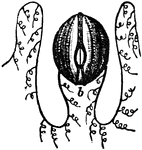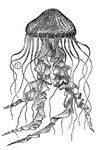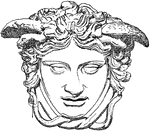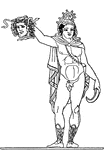Clipart tagged: ‘medusa’
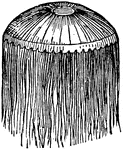
Acaleph
"One of the Acalephae; a name given to a large number of marine animals; and redpresenyted chiefly by…

Acalephae
"The under surface, showing the mouth in the center, surrounded by the tentacula, and overial chambers…
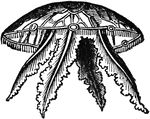
Acalephae
"Side-view, showing the tentacula hanging down in their natural position." — Chambers' Encyclopedia,…
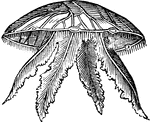
Medusa, aurita
"One of the commonest species, and must have been observed by those who frequent the sea-shore. In the…

Corymorpha
"A, a hydriform person giving rise to medusiform persons by budding from the margin of the disc; B,…

Endoderm Cell
"Vacnolated endoderm cells of eartilaginous consistence from the axis of the tentacle of a Medusa (Cunina)."…
Terebella medusa
"Distinguished by their habit of forming a tube or case, within which the soft parts of the animal can…

Ocellus
"Ocellus of a medusa (Lizzia Koellikeri). oc, pigmented ectodermal cells; l, lens." — Encyclopedia…

Medusa's head pentacrinus
"This may be considered as one of the greatest wonders of nature, it being a real animal, having blood,…

Physalia
"Physalia has no proper mouth, but the food is conveyed to the digestive cavity through a number of…

Polyp
"A hydroid colony of six polyps; f, feeding polyp; r, reproductive polyp; m, a medusa." —Davison,…

Sporosac
"Two female sporosacs (degenerate medusae) of Hydraetinia echinata. a, ectoderm; b, endoderm; o, eggcella;…
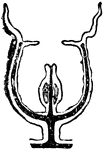
Sporosae
"Gradual degeneration of the medusa bud into the form of a sporosae. The black represents the enteric…

Sporosae
"Gradual degeneration of the medusa bud into the form of a sporosae. The black represents the enteric…

Sporosae
"Gradual degeneration of the medusa bud into the form of a sporosae. The black represents the enteric…
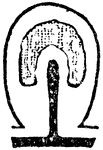
Sporosae
"Gradual degeneration of the medusa bud into the form of a sporosae. The black represents the enteric…
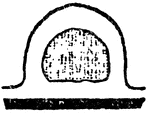
Sporosae
"Gradual degeneration of the medusa bud into the form of a sporosae. The black represents the enteric…
